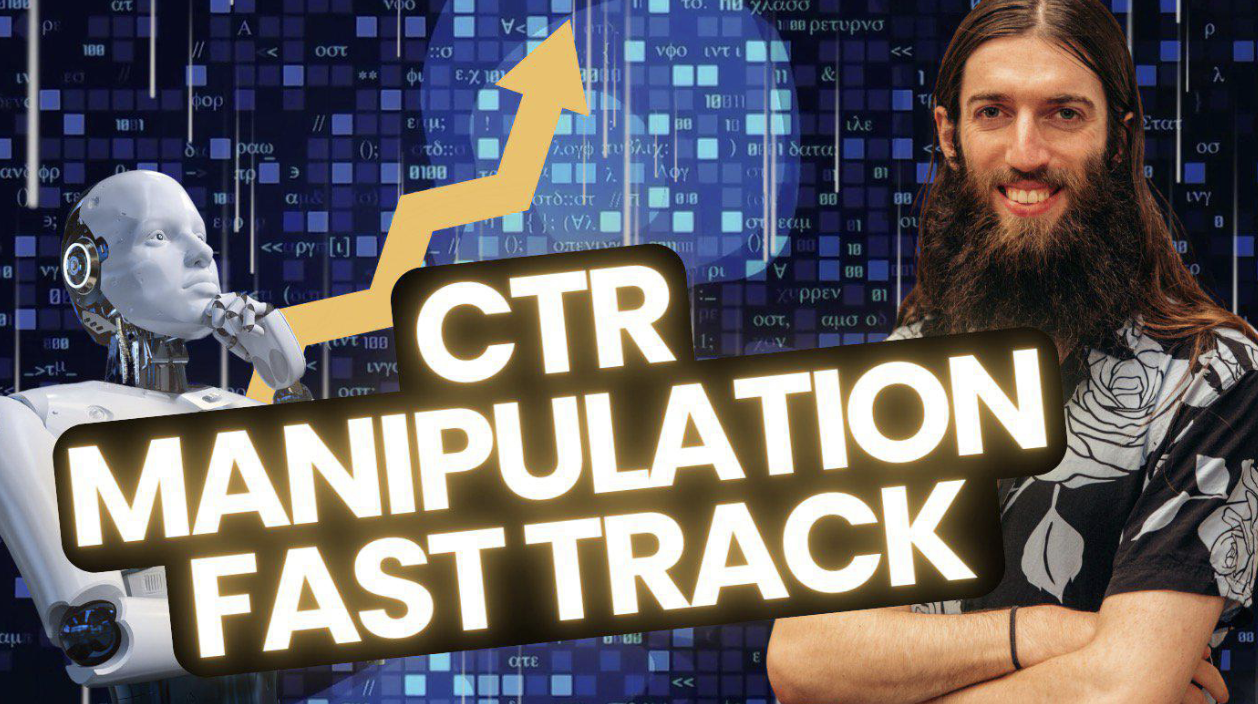Grasping CTR Adjustment: An Overview to Higher Internet Search Engine Outcomes
In the digital landscape, mastering CTR adjustment can be a game-changer for achieving noticeable search engine outcomes. By masterfully crafting components such as meta titles, summaries, and web content, marketers can affect customer habits and drive organic traffic to their sites. The critical use power words, numbers, and contacts us to action can substantially impact CTR, pushing on-line presence and conversions. However, truth art hinges on the analysis and adjustment of these strategies using devices like Google Analytics and warmth mapping, which can introduce very useful insights for enhancing online search engine performance.
Understanding Click-Through Rate (CTR)
Recognizing the Click-Through Rate (CTR) is essential for maximizing digital advertising strategies. CTR is an essential metric that determines the portion of people that click a details link after seeing it. In the world of digital advertising and marketing, CTR holds immense significance as it directly impacts the performance of on-line projects. By assessing CTR data, marketing experts can evaluate the efficiency of their ads, e-mails, and other electronic web content. A high CTR suggests that the web content reverberates well with the target market and is engaging sufficient to drive involvement. As a matter of fact, a low CTR signals that modifications are required to boost the content and draw in even more clicks.
Furthermore, recognizing CTR assists marketing professionals assess the importance and appeal of their messaging. By keeping track of CTR trends in time, marketing professionals can recognize patterns, preferences, and behaviors of their audience. This beneficial insight enables them to improve their approaches, enhance campaigns, and ultimately boost conversion rates. Basically, a deep understanding of CTR empowers marketing professionals to make data-driven choices that lead to much more efficient digital advertising initiatives.
Value of CTR in SEARCH ENGINE OPTIMIZATION
Have you ever before thought about the pivotal role Click-Through Rate (CTR) plays in enhancing SEO efficiency? CTR is a vital metric in the world of search engine optimization as it directly impacts a site's visibility and ranking on online search engine results web pages (SERPs) Online search engine like Google utilize CTR as a signal to identify the significance and quality of a website's material. A high CTR shows that customers discover the website's title and meta summary appropriate and engaging to their search queries, which subsequently signals to browse engines that the web site is a useful resource for users.
Additionally, a high CTR can result in increased organic web traffic, as more customers clicking a web site's link implies even more visitors being routed to the website. This rise in traffic can possibly result in greater conversion rates, even more leads, and inevitably enhanced organization end results. Surveillance and optimizing CTR must be an essential aspect of any kind of Search engine optimization strategy to enhance on the internet presence and drive natural growth.
Techniques to Improve CTR

One more reliable approach is to conduct A/B testing on meta tags, headlines, and other aspects to determine which combinations resonate best with the target audience. Surveillance and evaluating individual behavior via tools like Google Analytics can provide important understandings into customer choices and behaviors, permitting adjustments to be made accordingly.
In addition, improving website loading speed and guaranteeing mobile responsiveness are essential for decreasing bounce rates and boosting CTR. By supplying a seamless customer experience, visitors are more probable to involve with the content and click through to other web pages. Executing these techniques can assist boost CTR and eventually improve search engine results.
Devices for CTR Analysis
These tools supply useful insights right into individual behavior, permitting marketers to make data-driven decisions to enhance CTR. CTR Manipulation Press Release. By analyzing metrics such as bounce price, average session duration, and web pages per session, marketers can recognize locations for renovation to enhance CTR.
An additional vital device for CTR evaluation is Google Browse Console, which supplies useful information on just how websites appear in search engine result. Marketers can click for more track CTR for particular key words, image source screen adjustments in search rankings, and recognize possibilities to optimize meta tags and descriptions for higher CTR. Additionally, heat mapping devices like Hotjar or Crazy Egg deal visual representations of individual interactions on websites, assisting marketers comprehend where individuals are clicking and exactly how they navigate through the website. By leveraging these devices, marketing experts can get valuable insights to improve their CTR optimization techniques and boost their online search engine results.
Tracking and Changing CTR Strategies
To efficiently improve SEO performance, constant tracking and strategic adjustments of Click-Through Rate (CTR) strategies are important for making best use of on-line visibility and involvement. Keeping an eye on CTR involves on a regular basis tracking key metrics such as organic CTR, bounce price, and average session duration to review the efficiency of existing strategies. Assessing these metrics supplies understandings right into customer habits and assists determine patterns that can guide modifications for improved efficiency.
When checking CTR, it is important to focus on adjustments in positions, as they can influence the quantity of organic website traffic obtained. By very closely monitoring CTR data alongside positions, search engine optimization professionals can make and identify relationships informed decisions to optimize click-through prices.

Conclusion
Finally, understanding CTR adjustment is essential for achieving greater internet search engine outcomes. By understanding the significance of CTR in search engine optimization and carrying out reliable methods to boost it, marketers can drive a lot more natural web traffic and conversions. Using tools for CTR analysis and continually keeping track of and readjusting tactics based upon data insights are essential to enhancing on the internet presence and search engine performance. Overall, enhancing click-through rates is a critical aspect of electronic advertising and marketing success.
CTR is a crucial metric in the realm of search engine optimization as it directly impacts a web site's presence and position on search engine results pages (SERPs) A high CTR shows that users discover the internet site's title and meta summary engaging and appropriate to their search questions, which in turn signals to search engines that the web site is a valuable source for users.
An additional vital tool for CTR evaluation is Google Look Console, which gives important data on exactly how websites show up in search outcomes. Marketing professionals can track CTR for particular keywords, display adjustments in search positions, and determine opportunities to enhance meta tags and descriptions for higher CTR. Keeping track of CTR involves routinely tracking crucial metrics such as natural CTR, bounce rate, and ordinary session period to assess the effectiveness of existing strategies.